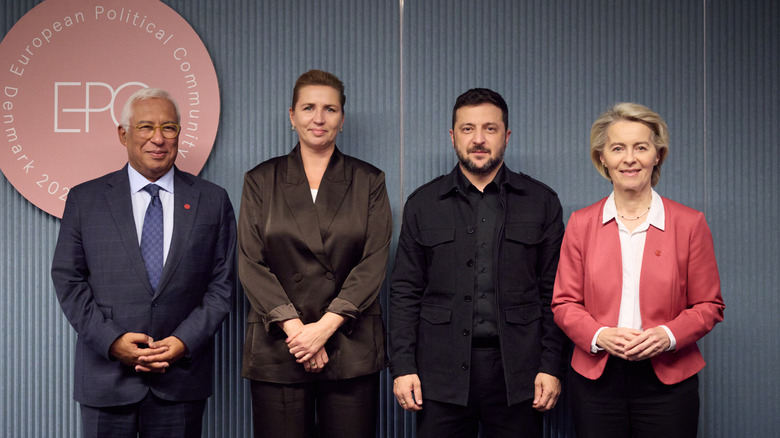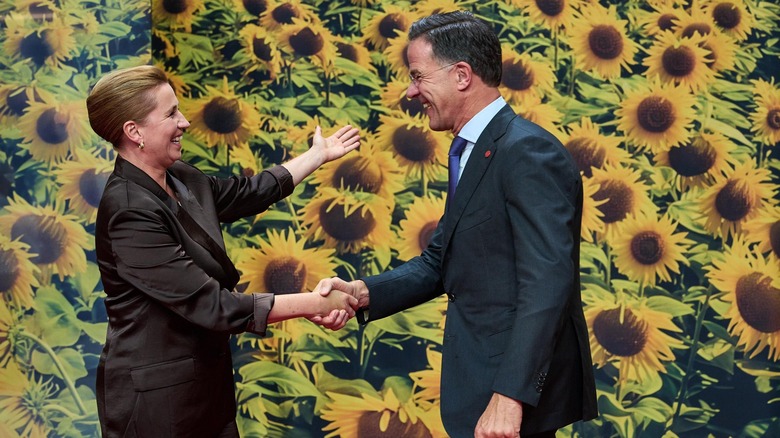Why A No-Fly Zone Over Ukraine Would Mean Complications For The West
Recent incursions of Russian drones into European airspace have pushed NATO to consider declaring a no-fly zone over Ukraine. While some believe it could de-escalate the war and guarantee Europe's eastern borders, others argue that its enforcement would come at a heavy cost for Western allies. Proposed by Poland after 16 Russian drones invaded its airspace in September 2025, the no-fly zone reflects a geopolitical landscape in which NATO's eastern flanks are increasingly impinged by Russia's war with Ukraine. Since this inciting event, Russia has violated the airspace of Romania and Estonia, while unidentified drones have shut down airports in Denmark and Germany, raising concerns about the security of European airspace in what Danish Prime Minister Mette Frederiksen called a 'hybrid war'. In many ways, the request encapsulates a landscape in which Europe must address a rapidly evolving threat landscape amidst uncertain support from the United States. It is also a fascinating look into a war in which Moscow and Kiev have changed the battlefield through high-tech drones and long-range missiles,a trend that has even carried over to sea drones patrolling the Black Sea.
Despite this increased urgency, political, strategic, and technical challenges will likely complicate enforcing a no-fly zone for Western allies. Historically, NATO has rejected a no-fly zone over Ukraine for fear of pulling the alliance into a direct conflict with the Kremlin. However, recent events have pushed Europe to bolster its air defenses. How NATO defends its territorial sovereignty may determine both the scale of its involvement in Ukraine and the future of air defense systems in a changing technological landscape.
Enforcing a no-fly zone
Like any line in the sand, a Ukrainian no-fly zone hinges on NATO's ability and willingness to enforce it — a proposition drone warfare has complicated significantly. For one thing, drones might make a no-fly zone more politically feasible, as shooting down a cheap, remotely operated military aircraft likely carries less political consequences than downing a fighter jet. However, this is also true for drone attacks, as they cost less financial and technological capital than traditional sorties. Furthermore, drones offer a degree of plausible deniability for both sides, best demonstrated by Russia's denial of its violations of Polish airspace.
Drone warfare also makes defending Ukrainian airspace more difficult. For one thing, traditional defense strategies are fiscally untenable, as each missile costs exponentially more than the drone it destroys. This was epitomized in September 2025, when Dutch and Polish fighter jets shot down several Russian drones, losing millions in the process. As such, enforcing a no-fly zone requires NATO to develop more efficient air defense systems in real time, a proposition that poses political, financial, and technological challenges. While Ukraine has advocated sharing its hard-won expertise in drone warfare with NATO, scaling these technologies in time to enforce a no-fly zone might be logistically difficult.
For some analysts, this paradigm puts NATO in a lose-lose situation. On the one hand, success is financially, politically, and logistically costly, while a public setback against Russia jeopardizes public faith in the alliance altogether. For NATO's eastern members, however, the no-fly zone may be worth the risk.
Alternative solutions
In response to Russia's recent incursions, NATO officials announced Operation Eastern Sentry, which seeks to create its first unified system for policing its eastern airspace. Eight member states, including the U.K., Denmark, France, Germany, Sweden, Spain, and the Czech Republic, have agreed to send military assets to Poland, including a fleet of Typhoon and Dassault Rafale fighter jets. The U.S., however, is notably absent, underscoring the urgency of Europe's recent military push amidst uncertainty caused by its uneven support.
European leaders must seek solutions reflecting the changing battlefield. One development is the proposed 'drone wall,' a multi-billion dollar anti-drone defense architecture stretching from Finland to Bulgaria. Ten member states agreed to the initiative during a September 2025 meeting with Ukrainian officials. The project provides a fascinating look into a Russo-Ukrainian conflict defined by the rapid development-response cycle of drone technologies. Financed by Europe's $150 billion new defense procurement initiative, the wall will likely feature several layers of new defense tactics, ranging from missiles and fighter jets to electronic defenses like signal jammers and spoofers to auditory sensors and defense drones.
Despite these initiatives, the future of Europe's air defenses remains uncertain. According to European officials, the drone wall will take at least a year to roll out. Whether Operation Eastern Sentry or a no-fly zone can fill that strategic void remains to be seen. While these strategies are not mutually exclusive, their differing development timelines point toward a security landscape where anti-drone defenses desperately need to catch up to modern threats. Whether Europe has the financing, military infrastructure, or political will to develop and scale its drone defenses may be the next essential question in its geopolitical chess game with its eastern rival.


